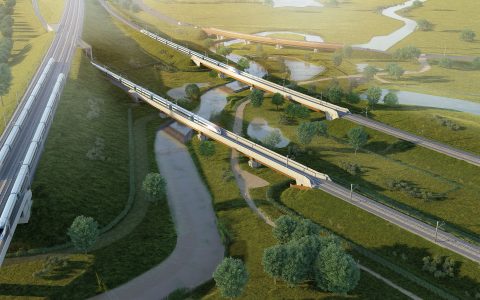New stage of energy measuring for European rail sector

By July 2020, the European rail sector should implement IRS 90930, a new standard in energy measuring. It includes the installation of onboard Energy Measuring Systems (EMS) in the locomotives and passenger trains as well as the data exchanges on ground. Bart van der Spiegel, an expert in energy management at Infrabel, talks to RailTech.com about this improvement and its significance for the railway undertakings in Europe.
“The IRS 90930 will replace the UIC 930 Leaflet issued in 2009,” says Bart van der Spiegel. July 2020 was set as the deadline to implement the new standard. According to Infrabel’s expert, this will have a great impact on the rail sector. First, it will change the data exchange. “The biggest consequence is obviously the change in the format for the data exchanges on ground. The Leaflet 930 used EDIFACT or UTILTS. The new one uses the same data blocks that shall be used by all new EMS for the communication to ground. There is no need to change the data format anymore on ground. Other data blocks that are available on-board can be forwarded to other actors on ground,” specifies Mr van der Spiegel.
Another important impact of IRS 90930 is an updated Role Model. “This is better aligned with the daily reality of the rail sector. Locomotives are equipped with EMS by a Vehicle Keeper. Different railway undertakings are operating trains using these leased locomotives. The IRS 90930 also specifies the tasks and responsibilities for all the roles,” adds the expert.
Different functions
Besides the new standard in energy measuring, the European countries should develop their own Settlement System. It should be also implemented by July 2020. Bart van der Spiegel lists six different functions of the IRS 90930 Settlement. The first one is the data exchange. “Exchange is collecting the Energy Metering Data from a Data Collecting System (the ground server communicating with the EMS on-board). A first validation is done. Certainly, the location data needs to be corrected as Exchange uses this to verify the Settlement Area where the consumption took place. Exchange transfers the Energy Metering Data to the system of the Settlement Area where the consumption took place,” notes the expert.
The second function is the Train Run Data Collection. “Train Run Data comes from the train-path requests from the RUs to Traffic Management of the IMs and possibly, the train composition messages coming from the railway undertakings and possibly also the detections of the trains by Traffic Management. This is an optional function,” explains Mr van der Spiegel. According to him, four other functions are as follows:
“- Energy Use Estimation estimates the consumption of train-runs. This is also an optional function.
– Energy Use Settlement validates the Energy Metering Data, replaces missing data or wrong data with estimated consumptions and allocate the consumptions to the correct consumer.
– Energy Cost Settlement defines the costs for energy consumption.
– Grid Cost Settlement defines the costs for transporting the energy through the different grids (public electricity grids and railway electricity grids)”.
Text continues below the picture

Different ways
Despite the single deadline, the European countries are able to implement the new standard in different ways. “It depends on national legislation and regulation,” notes Bart van der Spiegel. In order to simplify the process, seven European countries have already established the European partnership for railway energy settlement systems (Eress partnership).
The association joined forces of the rail infrastructure managers from Belgium (Infrabel), Denmark (Banedanmark), Finland (Liikennevirasto), Norway (Bane NOR), Sweden (Trafikverket), Switzerland (SBB) and the energy procurement cooperative from the Netherlands (Vivens). Altogether, they have developed the Erex solution, a modular settlement to manage and invoice energy consumed by rolling stock. ” Other countries can also decide to join this partnership. But in this case, the local IT-systems need to be adjusted in order to enable data exchanges with Erex,” says the Infrabel’s expert.
Sector Declaration
It is worth to note that European Rail Infrastructure Managers (EIM Rail) and Community of European Railway and Infrastructure Companies (CER) are preparing a Sector Declaration. It will also simplify the implementation of the IRS 90930. “The Declaration will refer to IRS 90930 and will contain some commitments for railway undertakings and infrastructure managers. The IRS 90930 is more a technical document. By adding this Sector Declaration we hope to realise a faster implementation of IRS 90930, but also of EMS installation and of Commission Implementing Regulation 2018/868 that requires from the countries to have a Settlement System in July 2020,” clarifies Bart van der Spiegel, an expert in energy management at Infrabel.
Are you interested to know more about IRS 90930 and energy measuring policy in the European rail sector? Bart van der Spiegel will give a presentation at the Intelligent Rail Summit 2019. The event will take place on 19-21 November in Paris. Its programme is available here.
Also read:





